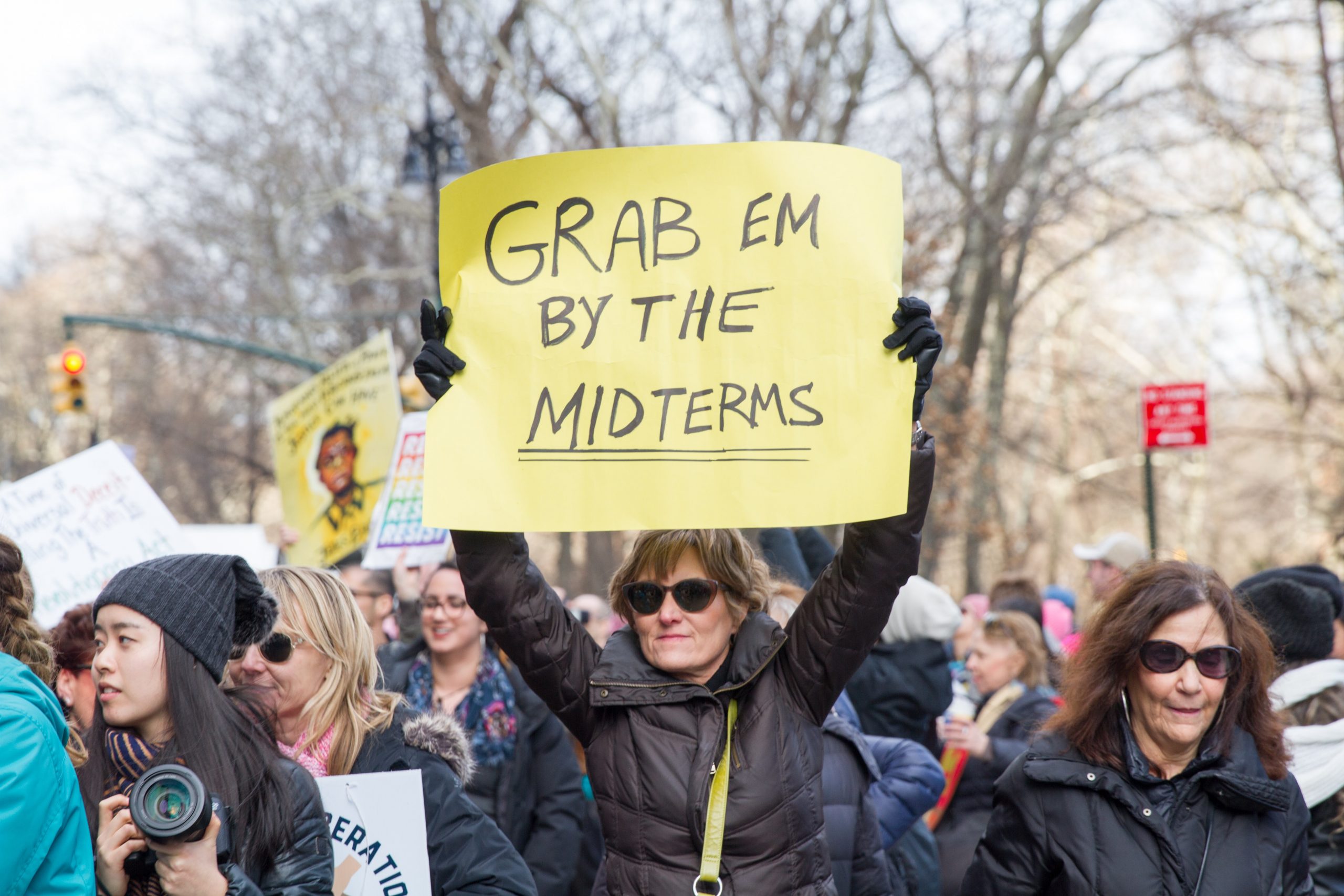Trump. Gridlock. Urban-rural divides. After days of counting, recounting, and run-off elections, the broad political picture painted by the US midterms is approaching completion. Here are some of the things to look forward to in the years ahead, before the presidential election set for 2024.
Making America Great, again? – Trump Announces Bid for 2024 Presidency
A week after the congressional elections, Trump has launched an early bid to become the Republican presidential nominee, in attempt to pre-empt potential rivals. This is despite widespread reporting of Trump as the real loser of the midterm elections – Trumpist candidates typically suffered losses and the Republican party largely underperformed nationally.
“We have to save our country,” was the main gist of Trump’s martyr-like speech announcing his third bid for the White House. “For millions of Americans, the past two years under Joe Biden have been a time of pain, hardship, anxiety and despair”. Although it is likely he will become the Republican nominee, this time round he will face much greater challenges in trying to recapture the White House. The businessman turned politician has already lost a lot of significant long-standing support – with daughter Ivanka releasing a statement saying she is taking a step back and not becoming involved in the 2024 campaign. Some of Trump’s most prominent donors, namely Blackstone CEO Stephen A. Schwarzman, have expressed plans to back alternative candidates, casting a dark cloud over the Trump candidacy and indicating it is time for new party leadership.
But it is not only his waning popularity and support that will make it difficult for Trump to run; a new media landscape on the horizon will produce great challenges in the bid to win the presidency. It is no secret that media coverage has a significant impact in election outcomes, and with Murdoch, the Wall Street Journal, the New York Post already shining a more negative light on Trump, it is predictable that there will be a shift in the media coverage towards the former president. This could shake up the presidential playbook.
Despite these challenges, Trump remains a top choice in recent opinion polls. The potential Democrat candidates are yet to be announced, so it is still uncertain as to what sort of challenges Trump will face.
Stepping Stones become Stumbling Blocks – Democrats Lose the House
The predicted ‘Red Wave’ was more of a Red Ripple. The Republicans only managed to recapture the House by a wafer-thin margin with the Democrats retaining power in the Senate. The implications of this, however, will still be significant on the upcoming electoral period. With approval ratings that have dipped to 37%, it came as a shock that the Democrats managed to come so close to getting the 218 seats needed to secure the House. Unprecedented electoral results pose a multitude of questions – why was the swing towards Republicanism so small? Can Biden retain legislative power without control of the House?
Election deniers in many districts did not perform as well as expected, making the race even tighter. The American appetite for explaining elections with vote fraud appears to have been satiated. The days of Trumpism flirting with the far-right conspiracy theorists has debatably ended. This led to widespread failure from somewhat sensationalist, election denying candidates, reducing the impact of Republican voting on the makeup of the House.
As slim as the win may have been, all it takes is one chamber to block Biden’s bills. The Republicans, who underperformed, will still be able to obstruct Biden’s legislative proposals; but in turn, Biden can simply veto or override the suggestions of the House. This is counterintuitive by nature, so the next two years will likely be faced with a lot of back and forth, and not a lot of legislation being passed easily into law. The impact this will have on bills from across the political spectrum is yet to be seen; but the influence of changing Supreme Court justices nominated during a period of ideological alignment in the House and the Senate was catastrophic for Democratic policies such as abortion. Mismatch between the ideological makeup of the chambers allows nominations to be blocked again, and worryingly for the left-wing among the electorate this man precede another period of Republican appointments.
Following their loss of the house, Democrat icon Nancy Pelosi, the first woman to have served the powerful position of the speaker of the House, steps down as leader; marking the end of an era, and a historic career of congressional leadership. Pelosi, 82, was notable for her ability to pass key legislation, keep what was at times a very fractious house united, and challenge some of the world’s most powerful men. She will remain in Congress, representing San Francisco in the House, as she has done for 35 years. With voting still under way, it is still uncertain as to who the next House speaker will be. In an internal vote, the Republican caucus has nominated Minority Leader Kevin McCarthy to serve as speaker, so he will likely take the position, despite a few right-wing Republicans outwardly saying they will not back McCarthy.
The Electoral Division in America’s Melting Pot
Demographics, money, urban-rural divides placed a heavy influence on the ways in which citizens voted in the congressional elections. The impact of personal issues varied from state to state, including abortion rights, gun violence, and drug legalisation as influential factors on the vote.
The called seats for each party, shown by district density, shows that suburbia remains the starkest divide in the elections. Republicans have won just six total seats in urban areas, in comparison to Democrats’ 75; and the Democrats carry no more than six seats in rural districts. This represents a Congress left polarised by an urban-rural divide even more-so than the current one. The narrow House majority held by the Republicans, is largely catalysed by their dominance in these suburban areas.
As always, young voters tended to vote towards the more left-leaning Democrats. But in this case, perhaps what made the race come so close, was the significant turnout amongst the youth. Over 25% of 18–29-year-olds voted in these elections, which is the second highest turnout for a midterm election. The trends also continued in ways of ethnicity with Black and Latino voters siding with the Democrats in the races. In a similar vein, the Democrats also gained the support from women, and college-educated, patterns which have also been previously observed. By gaining support in all these areas, certain demographics played a key role in the tight race this term.
What made the 2022 midterms unique was the fact that politicians were not only being measured, but policy preferences were also contested. The outcomes have been varied, whilst reproductive rights and decreasing abortion restrictions were largely advocates for, most policies, such as cannabis legalisation, immigration, voter access laws, showed mixed preferences.
Republicanism on the Horizon?
The Democrats smashed this electoral period well out of the park. Incumbent presidents typically always crash in popularity during the midterms – the average loss sits around 27 seats. At surface level, this lays the foundations for Democratic electoral success in 2024.
Although Trump seems much more of a comedic political caricature this time around, his presence on the political landscape harps back to dark memories for many American voters. His successor, Rob DeSantis, acts as a more palatable Trump candidate for the Republicans who quickly tired of Trump’s misinformed, uneducated, and unregulated tweets and speeches. The potential of a Republican president in 2024 is not crushed yet. The two years ahead forecast as much political turbulence as the echoes of the past.






0 Comments